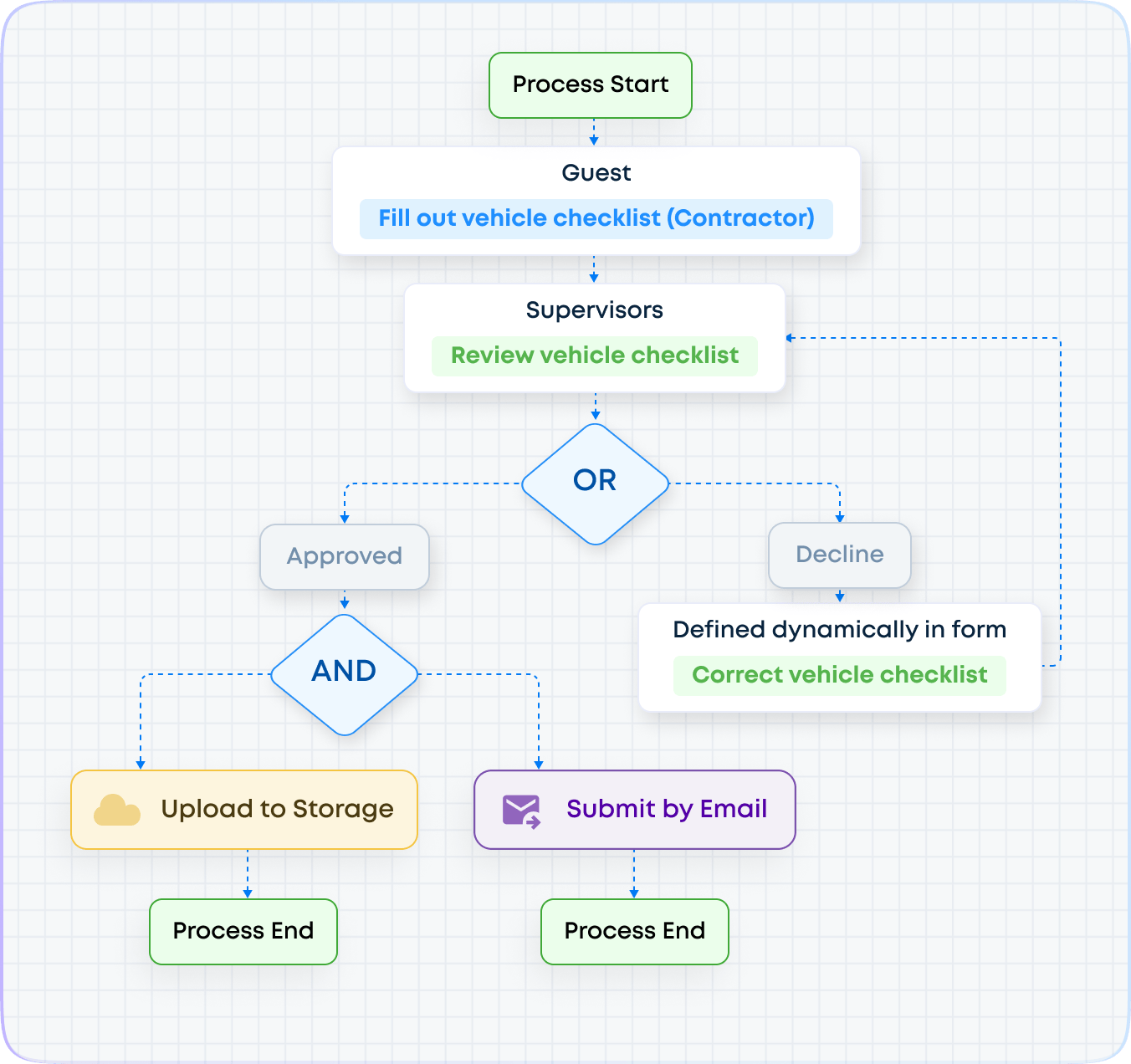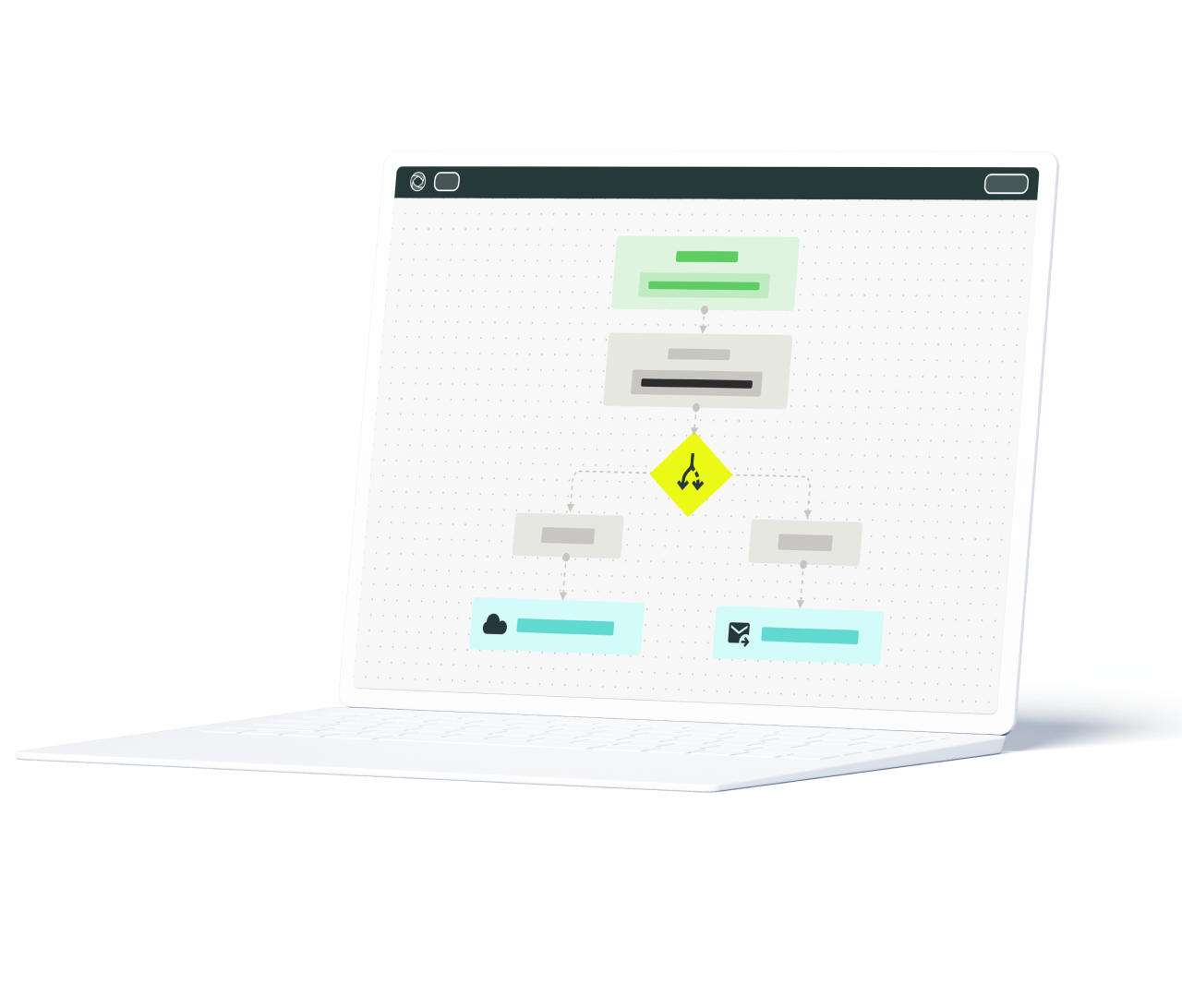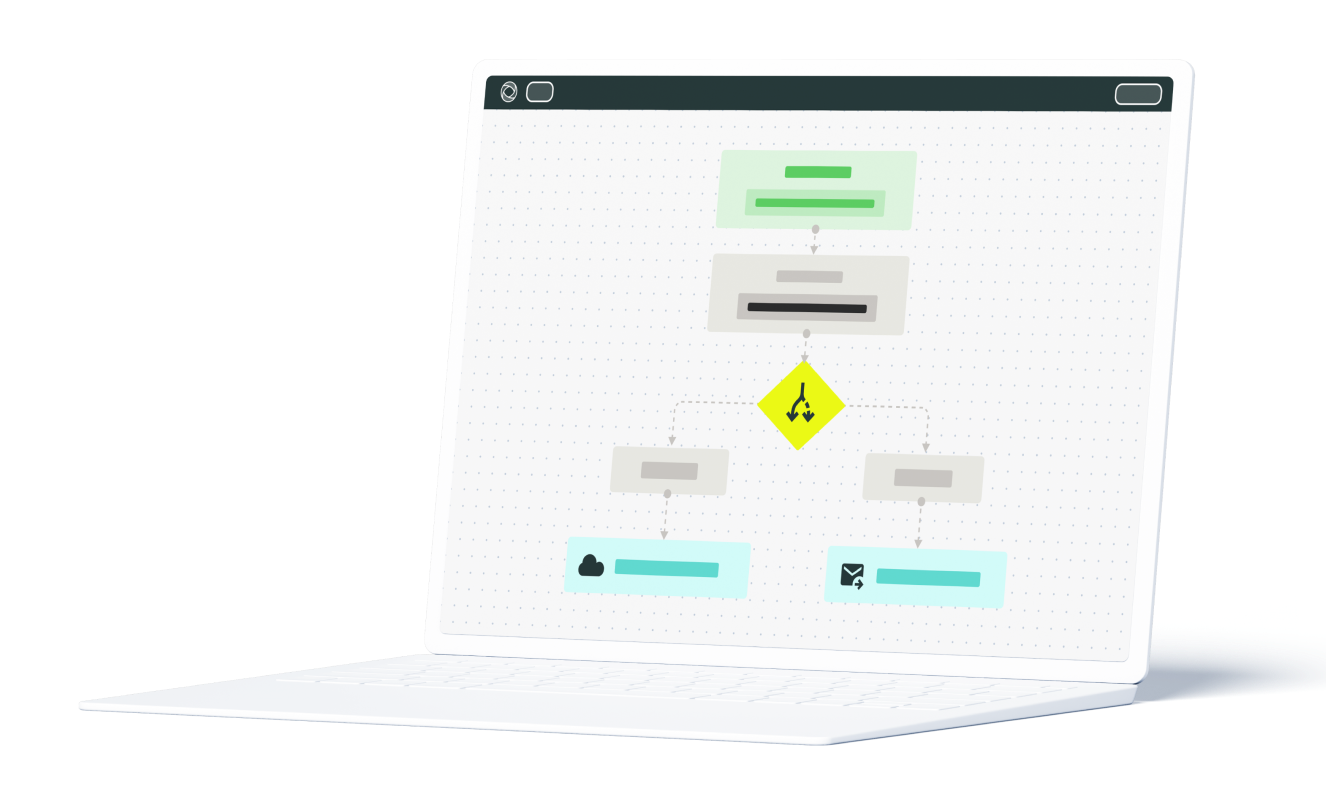What Does an Automated Vehicle Inspection Look Like?
The answer is obvious: you need to build it. The first step is defining responsible figures. It is necessary to spell out all the process details, from to what vehicle parts should technicians pay prior attention to the actions to be taken in case of breakdown of vehicle or accident.
Working with vehicles isn’t only about completing a quick check but also about the smooth communication between technicians and a team. Even if it is a very common checklist that technicians have seen more than once, a manager should emphasize the most important steps in it. A manager needs to be able to properly distribute the load so that the technicians do not get lost in multiple documents, and find such a balanced flow that technicians can combine tech and paperwork.
It’s a subtle sense of detail and process. The inspection may count 120 of vehicles. And a technician has to work so that even a shadow of a car looks fine.
So, there should be an auxiliary instrument to connect the trinity of management, technicians, and documentation. And this instrument is a vehicle inspection app.


The process isn’t as hard as rocket science, on the contrary, everything is quite simple. This particular workflow was created in the vehicle inspection software called Fluix, where it’s easy to set up a task sequence and draw a route so that documents flow like a river from point to point, from the field to the office and back.
As you can see, a technician takes an inspection checklist, and, while inspecting a vehicle and its components, fills out a form within the app. If there’s an issue, a technician contacts a manager to start working together over the problem. If the vehicle meets all the requirements, meaning it’s absolutely safe and works perfectly, the technician submits the checklist to the folder on company cloud storage.
There are no difficulties, no mess, and no losses. With the help of vehicle inspection mobile app, companies create their own library of perfectly organised documents covering technical requirements and technical inspections for vehicles. It is like a special place for your vehicle profiles, only better.
To cover the key aspects of the process, we recommend using these checklists:
What Powers the Automated Vehicle Inspection
Let’s look at some capabilities of the vehicle inspection app that actually make the automation happen:
- Pre-defined documentation flow throughout the complete process that guarantees that no document falls between the chairs
- Mobile digital forms that have a unified look, with the date in a specific format, images added right from the device, eSignature in the right place, required fields, and other benefits of electronic forms.
- Offline access to documents and forms for remote teams, so that they can check manuals and fill in inspection checklists on tablets directly on-site without connectivity and submit them to the office once the connectivity is back.
- Barcode scanning on machinery and heavy vehicles makes delivery of shipping documents fast and on-time;
- Reminders to perform the regular inspection checklist help inspectors avoid missed checks and stay compliant.
- File naming conventions allow not only to name files automatically but also find the exact documents within the seconds — no matter how many folders of documents the project entails.
- Control functions for supervisors to follow the process in real time and make adjustments on-the-go.
- Granular permissions allows managers to give engineers extra access or visibility to documents in progress, data storage and reporting.
How Fluix Keeps Vehicle Inspection Process All-Good
By its nature, Fluix allows technicians to fill out vehicle inspection checklists, add comments, photos, send forms, contracts, bids and other documentation. Because it’s hard for the team to handle large paper drawings on site, let alone during the rainy and windy mood of nature, companies need to take the paperless path.
According to the US Department of Transportation, technicians should complete vehicle inspection logs at the beginning and end of each day. While in the UK, it is crucial to prove that inspections have been completed correctly, especially as licensing authorities move towards electronic reporting such as the Earned Recognition scheme.
Fluix gives the possibility to send real-time reporting of identified defects so that fleet managers could take immediate action and schedule repair works right away. Thus, there won’t be any problems on the governmental level.

